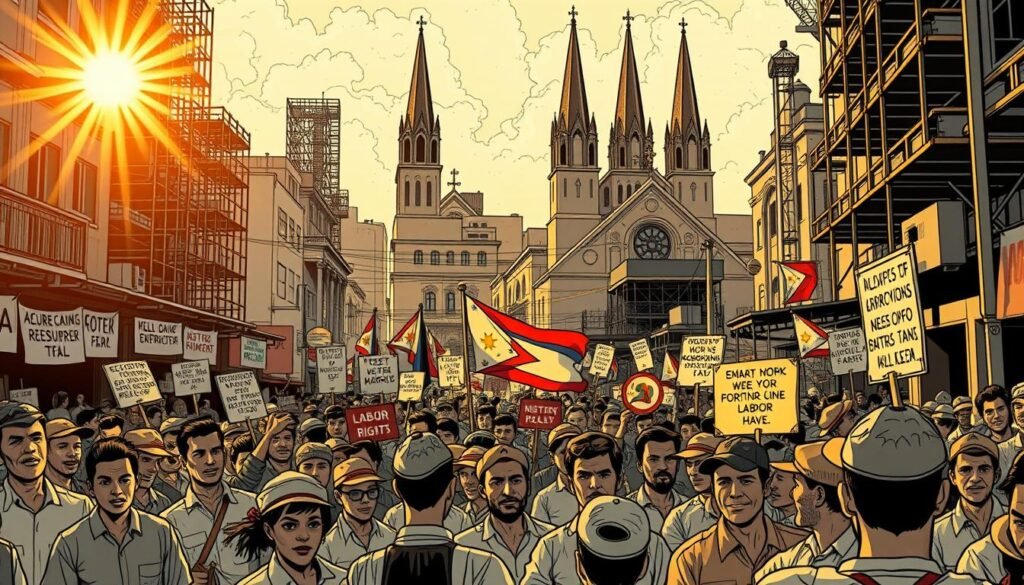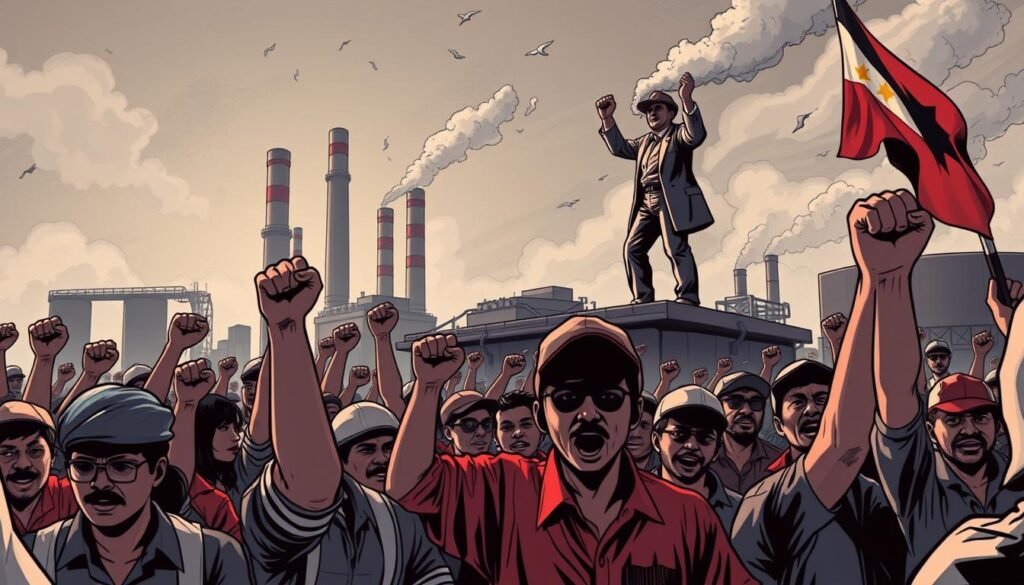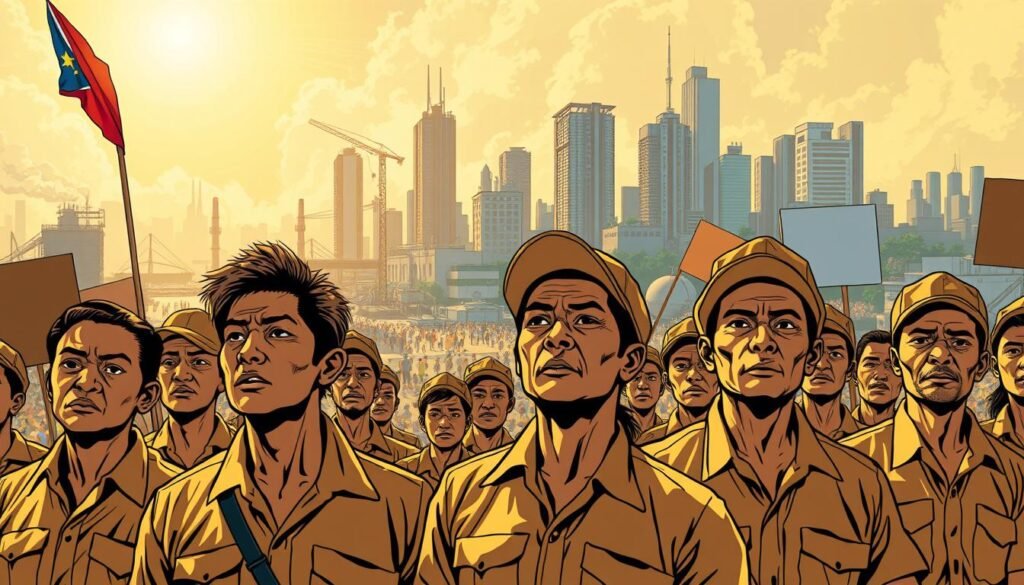The American Era marked a pivotal time for Filipino labor movements, shaping the foundation of modern worker rights. During this period, the Philippines experienced significant social and economic changes, driven by American influence. These changes sparked the rise of organized movements that fought for fair treatment and better working conditions.
Understanding this history is crucial for grasping the challenges faced by workers today. The struggles of the past laid the groundwork for policies that protect the rights of the Filipino worker. From strikes to collective bargaining, these movements demonstrated the power of unity in demanding justice.
Social and economic challenges, such as low wages and poor working conditions, fueled the need for reform. Organized efforts, like the Delano grape strike, highlighted the resilience of Filipino workers. These events not only improved lives but also inspired future generations to continue the fight for equality.
By examining this era, we can better appreciate the progress made and the work still needed. The legacy of these movements remains relevant, reminding us of the importance of standing together for a fairer future.
Key Takeaways
- Filipino labor movements during the American Era shaped modern worker rights.
- Organized strikes and collective bargaining were key strategies for change.
- Social and economic challenges drove the need for labor reforms.
- Historical events like the Delano grape strike inspired future generations.
- Understanding this history helps address current worker issues.
Historical Context of Filipino Labor Movements
The American colonial period brought profound changes to the Philippines, particularly in work culture and labor organization. Colonial policies introduced new frameworks that reshaped traditional practices, laying the groundwork for modern labor relations. These changes were driven by the need to adapt to a rapidly evolving economic landscape.

One of the most significant impacts was the establishment of early unions and worker centers. These organizations became crucial in advocating for better conditions and fair treatment. For example, the formation of the Congreso Obrero de Filipinas (COF) in 1913 marked a turning point in organized labor efforts.
American Colonial Influence on Labor and Work Culture
American colonial policies introduced new labor practices that emphasized efficiency and productivity. This shift often came at the expense of workers’ rights, leading to widespread dissatisfaction. However, it also inspired the creation of structured labor movements that sought to address these issues.
“The colonial period was a time of both challenge and opportunity for Filipino workers. It forced them to organize and fight for their rights in ways they had never done before.”
These movements were not just about improving wages but also about empowering the worker body. Education and awareness became key tools in mobilizing communities and fostering unity.
Early Union Organizing and the Formation of Worker Centers
Early union efforts focused on collective action to demand better conditions. Strikes, such as the 1902 general strike organized by the Union Obrera Democratica (UOD), demonstrated the power of organized labor. These events led to tangible improvements, including wage increases and better working conditions.
The establishment of worker centers provided a space for organizing and strategizing. These centers became hubs for education, advocacy, and community building. They played a vital role in shaping the labor movement’s future.
| Event | Impact |
|---|---|
| Formation of COF (1913) | Unified labor organizations under one umbrella |
| 1902 General Strike | Resulted in wage increases and improved conditions |
| Establishment of Worker Centers | Provided spaces for organizing and education |
These early efforts laid the foundation for broader movements that would continue to fight for workers’ rights. The colonial context also influenced later developments in labor laws, as seen in the legacy of American infrastructure projects in the Philippines.
Key Milestones and Turning Points
Key milestones in the Filipino labor movement highlight the power of collective action. From major protests to legislative breakthroughs, these events reshaped the landscape of worker rights. They also reflect the influence of global trends and economic policies on local strategies.

Major Protests and Legislative Advances
One of the most significant turning points was the 1902 general strike, which united workers across industries. This protest led to wage increases and better conditions, setting a precedent for future activism. Similarly, the Triangle Shirtwaist Fire of 1911, though tragic, spurred critical safety reforms globally.
In the Philippines, the Congreso Obrero de Filipinas (COF) played a pivotal role in advocating for legislative changes. Their efforts resulted in laws that protected workers’ rights and improved workplace standards. These reforms were driven by the collective voice of the worker body, demonstrating the impact of organized action.
Impact of International Labor Trends and Economic Policy
Global labor trends, such as the rise of unions in the U.S. and Europe, influenced Filipino strategies. For example, the Great Postal Strike of 1970 inspired similar movements in the Philippines, emphasizing the importance of solidarity. International economic policies also shaped local labor dynamics, as seen in the shift toward industrial work centers.
“Global movements remind us that the fight for fair treatment is universal. Filipino workers drew inspiration from these trends to strengthen their own advocacy.”
These milestones not only improved conditions but also laid the groundwork for future reforms. By understanding these turning points, we can better appreciate the progress made and the challenges that remain.
Labor: Shaping Filipino Worker Rights and Identity
The evolution of Filipino worker rights and identity is deeply rooted in the collective efforts of grassroots movements and organized advocacy. These movements not only fought for better conditions but also redefined what it means to be a Filipino worker. From fragmented beginnings, they grew into a unified force that shaped national identity and solidarity.

Empowering the Filipino Worker Body and Advancing Rights
Early initiatives focused on empowering the worker body through education and community action. Grassroots efforts, like the formation of the Union Obrera Democratica (UOD), provided a platform for workers to voice their concerns. These actions led to significant legislative changes, such as the Eight Hour Labor Law, which established standard working hours.
Programs aimed at improving welfare, such as the Domestic Workers Act, further advanced worker rights. These efforts not only improved conditions but also fostered a sense of unity among workers. As one advocate noted,
“Empowering workers is about more than fair wages—it’s about dignity and respect.”
Evolution of Labor Movements and Community Advocacy
From isolated strikes to nationwide movements, Filipino labor advocacy evolved into a cohesive force. Events like the 1902 general strike demonstrated the power of collective action. Over time, these efforts transformed into structured organizations, such as the Trade Union Congress of the Philippines (TUCP), which continues to advocate for workers today.
Community advocacy played a crucial role in this evolution. Worker centers became hubs for education and organizing, fostering a culture of solidarity. These efforts not only improved conditions but also shaped the narrative of Filipino labor as a symbol of resilience and unity.
- Grassroots actions empowered workers and advanced rights.
- Legislative milestones, like the Eight Hour Labor Law, improved conditions.
- Community advocacy fostered unity and reshaped national identity.
- Structured organizations, such as TUCP, continue to drive change.
These efforts transformed the identity of Filipino workers, turning them into symbols of resilience and unity. By understanding this history, we can better appreciate the progress made and the work still needed to ensure fair treatment for all.
Conclusion
The rise of Filipino labor movements during the American Era reshaped the nation’s approach to worker rights and social advocacy. Colonial influence introduced new structures, sparking organized efforts that fought for fair treatment and better conditions. From early unions to landmark strikes, these movements laid the foundation for modern reforms.
Key milestones, such as the 1902 general strike and the formation of the Congreso Obrero de Filipinas, demonstrated the power of collective action. These events not only improved wages and safety but also inspired future generations to continue the fight for equality. The legacy of these efforts remains deeply ingrained in Filipino identity.
Today, the lessons from this era resonate with ongoing struggles for fair treatment. Understanding this history helps us appreciate the progress made and the work still needed. The legacy of these movements reminds us that unity and advocacy are essential for a just future. For further insights into labor partnerships, explore this resource.
FAQ
What influenced the rise of Filipino labor movements during the American era?
The American colonial period introduced new work culture and labor systems, which sparked the need for organized worker rights and advocacy.
How did early union organizing shape Filipino worker centers?
Early unions laid the foundation for worker centers by uniting laborers to address unfair practices and demand better working conditions.
What were some major protests in Filipino labor history?
Key protests included strikes against low wages and poor conditions, which led to significant legislative changes for worker rights.
How did international labor trends impact Filipino workers?
Global labor movements inspired Filipino workers to adopt similar strategies, strengthening their fight for fair treatment and economic justice.
What role did labor movements play in shaping Filipino worker identity?
These movements empowered workers, fostering a sense of unity and pride while advancing rights and improving their quality of life.
How has community advocacy evolved in Filipino labor movements?
Advocacy has grown to include broader social issues, creating stronger networks and support systems for workers and their families.
Source Links
- Remembering the Manongs and Story of the Filipino Farm Worker Movement
- Filipino American Farmworkers Fight for Their Rights | lesson plan curriculum
- A history of trade unionism in the Philippines
- Project MUSE – The Filipino Labor Movement in the 1930s: A Footnoted History
- National Historical Commission of the Phillippines
- Key Events in Labor History
- 3 Critical Milestones in the Manufacturing Industry | GES
- Labor Unions in a Changing World of Work: The Philippine Experience, Japan Labor Issues Volume 8 Number 50, Special Issue 2024
- Gender Equality in the Labor Market in the Philippines
- Long-Term Effects of Labor Migration in the Philippines: "Napakasakit, Kuya Eddie!"
- Conclusion – The Mobility of Labor and Capital
- Conclusion: labor and the modernizing state – Decolonization and African Society
- Conclusion: Labor in Opposition—Contrasts and Continuities

